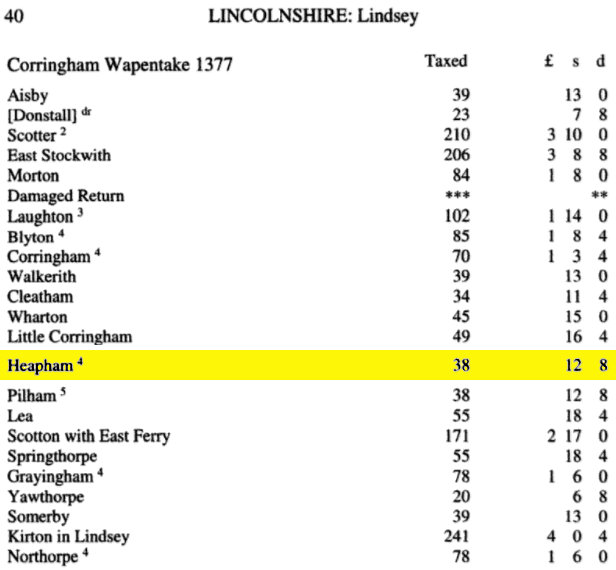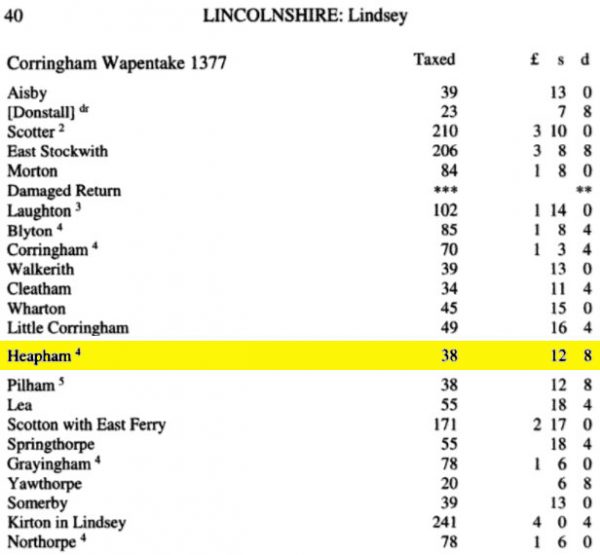State Documents
Topic 4: State Documents
State documents such as the poll tax returns of 1377 and the diocesan returns of 1563 may not provide much detail about the layout of the village, but it would provide an indication of the number of households in the parish, and a comparison between the two would show how the village has fared over that time.
Other records such as parish accounts and wills can also give a valuable insight into everyday life in the village in the medieval and post-medieval periods.
Poll tax returns
For example, looking at the poll tax returns of 1377
We look at the West Riding of Lindsey, and in the Corringham Wapentake, Heapham is listed as having 38 lay persons over the age of 14 who were not beggars.
Compare this to the 20 households of Freemen mentioned in the Domesday Survey, and we see that the population has changed little in the intervening centuries and may even have decreased slightly.
It is also smaller than some of the nearby villages such as Springthorpe (55 persons) and Willingham (67 persons), which were of comparable size at the time of the Domesday survey.
19th century county directories
To see how the village faired after the medieval period, you can consult documents such as 19th century county directories. These were an aid to business which listed the important details of each village and town in a county such as population, the level of agriculture and the names of the businesses present.
In 1856, Whites directory describes Heapham as a scattered parish of 156 souls, approximately 34 households, which shows considerable recovery of population since the 14th century.
However, if we look again at our nearby villages, Springthorpe has a population of 300 souls and Willingham has 499 souls.
So it would appear that while neighbouring villages continued to develop and grow through the medieval period and beyond, Heapham was not so successful, perhaps that goes some way to explain the isolated church and the remains of the former manor and fields.
So, with just a cursory viewing of the available information we can see the medieval plan of the village, and get a clue as to its story, and why it is the scattered village that it is today.


